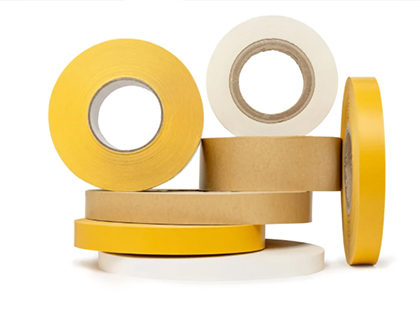In our daily life, release paper is everywhere, from the labels on products to the packaging of various items. But as environmental awareness grows, people are increasingly concerned about how this common material can contribute to environmental protection. So, how does release paper achieve its environmental protection upgrade? Let’s find out.
One of the key steps in the environmental protection upgrade of release paper is the use of sustainable raw materials. Traditional release paper often relied on virgin wood pulp, which put a great burden on forest resources. Now, many manufacturers are turning to recycled fibers. For example, some companies collect waste paper, process it through advanced technology, and then use it to produce release paper. This not only reduces the demand for virgin wood but also helps to solve the problem of waste paper disposal.
Another innovation is the use of plant - based fibers. Bamboo, for instance, is a fast - growing and renewable resource. Release paper made from bamboo fibers has similar performance to traditional wood - pulp - based release paper but has a much lower environmental impact. It requires less water and energy during production and does not cause as much deforestation.
The coating on release paper is crucial for its performance, and it also plays an important role in environmental protection. In the past, some coatings contained harmful chemicals that could pollute the environment during production and disposal. However, now there are new types of green coatings emerging.
Silicone - free coatings are becoming more popular. These coatings use natural or synthetic polymers that are biodegradable or more easily recyclable. They still provide excellent release properties but without the negative environmental effects associated with traditional silicone - based coatings. For example, in the food packaging industry, silicone - free release paper coated with plant - derived polymers can ensure that food products do not stick to the packaging while also being safe for the environment.
Some companies have also developed water - based coatings. Unlike solvent - based coatings, water - based coatings do not emit volatile organic compounds (VOCs) during the drying process. VOCs are harmful to the air quality and human health. By using water - based coatings, release paper manufacturers can significantly reduce their environmental footprint.

The production process of release paper has also seen many environmental - friendly improvements. Modern manufacturing plants are adopting more energy - efficient equipment. High - efficiency drying machines, for example, can reduce the energy consumption required to dry the release paper. Some factories are even using renewable energy sources such as solar or wind power to meet part of their energy needs, further reducing carbon emissions.
In addition, waste management in the production process has been enhanced. Instead of directly discharging wastewater, many plants now have advanced wastewater treatment systems. These systems can purify the wastewater, remove harmful substances, and then reuse the treated water in the production process. This not only saves water resources but also prevents water pollution.
To truly achieve environmental protection, promoting the recycling and reuse of release paper is essential. Many regions and companies are now setting up recycling programs specifically for release paper. After being collected, the release paper goes through a series of processes, including sorting, de -inking, and pulping, to be turned into new paper products.
Some innovative companies are also exploring new ways of reuse. For example, used release paper can be processed and used as packaging materials for non - food items, reducing the need for new packaging materials. This closed - loop approach maximizes the utilization of resources and minimizes waste generation.
In conclusion, the environmental protection upgrade of release paper is a comprehensive process that involves raw materials, coating technology, production processes, and recycling. Through these efforts, release paper is no longer just a common industrial material but also an important part of the sustainable development of the industry. As consumers, we can also support these environmentally - friendly products by choosing release paper - based products with green certifications. In this way, we can all contribute to protecting our planet.